1. Breaking a Mirror Brings Seven Years of Bad Luck
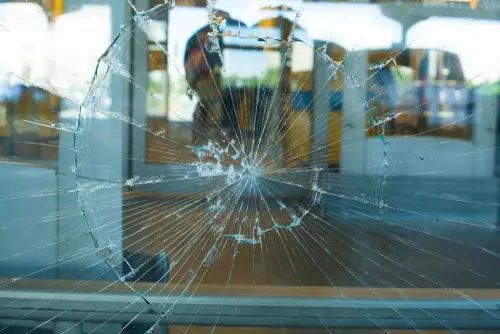
Mirrors were once rare and fragile, so breaking one was genuinely dangerous—sharp shards could cut skin, and polished surfaces were expensive to replace. To keep people cautious around them, warnings emerged that breaking a mirror would bring misfortune. Over time, the practical concern for personal safety and financial loss became exaggerated into a superstition about seven years of bad luck. Today, people treat it more like a symbolic warning than a real-life hazard.
The superstition stuck because it encouraged careful handling without needing enforcement. It was a clever way to make people treat a fragile, potentially dangerous object with respect. Even kids were taught to be gentle with mirrors, reducing accidents. Now, most of us still remember the rule, even if we only fear the “luck” part.
2. Walking Under a Ladder
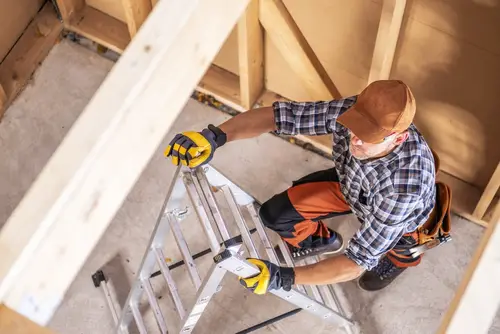
Walking under a ladder was once a serious safety risk because ladders lean precariously, and anyone above could drop tools or fall. In addition to the practical danger, the triangle formed by a ladder against a wall was considered sacred, giving a spiritual layer to the caution. Avoiding it reduced real-world injuries while also instilling a sense of moral vigilance. Eventually, the safety concern became wrapped in superstition, with “bad luck” attached to the act.
The rule persisted because it worked: fewer injuries occurred if people avoided walking under ladders. Over generations, even when ladder technology improved, the superstition remained embedded in culture. Today, we mostly associate it with bad luck rather than real danger. Still, it started as a very literal precaution for personal safety.
3. Throwing Salt Over Your Shoulder
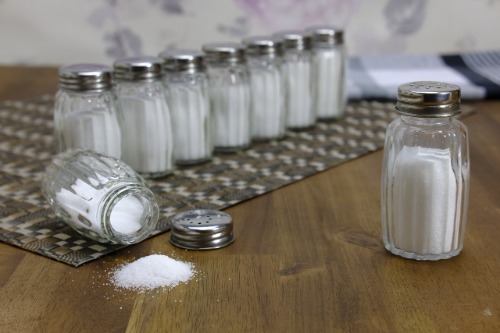
Salt was historically valuable and essential for food preservation, so spilling it was considered a real misfortune. Tossing some over your shoulder originally served as a precautionary ritual to ward off whatever could “exploit” your mistake, blending practical and symbolic safety. It helped people feel in control of potential negative outcomes caused by accident or carelessness. Over time, it evolved into the superstition of protecting oneself from bad luck after spilling salt.
The practice reinforced careful handling of an important substance, reducing waste and accidents. People also believed it could avert evil spirits or harmful forces, so it doubled as emotional safety. The ritual persists in modern kitchens as a fun superstition rather than a literal necessity. Still, it began as a protective action grounded in safety and resource management.
4. Not Whistling Indoors

Whistling indoors was originally a practical warning rather than just superstition. In old wooden houses, whistling could be mistaken for signals of danger, like fires or intruders, and could startle people handling sharp tools or cooking over open flames. Avoiding whistling indoors helped prevent accidents and confusion in these early households. Over time, the caution turned into the superstition that whistling inside could “invite bad luck” or evil spirits.
The habit stuck because it encouraged quiet and attentiveness in potentially hazardous spaces. It reduced the risk of accidental injuries in busy households, especially in kitchens or workshops. Later, the reasoning shifted from practical safety to general misfortune. Today, it’s mostly treated as an old superstition, but it has very real roots in protecting people from danger.
5. Carrying a Rabbit’s Foot

Rabbits were once common but skittish, and trapping one required skill to avoid injury. Carrying a rabbit’s foot was a way to show mastery and keep oneself “safe” during hunting by respecting superstition and ritual. Hunters believed it would bring luck and protect them from misfortune while traveling or hunting. Over centuries, the rabbit’s foot shifted from a talisman for practical safety to a general good-luck charm.
It originally helped people feel secure in dangerous outdoor activities. The superstition gave hunters a sense of control over hazards like predatory animals or accidents. Today, people carry it for luck at casinos or exams, not hunting. Its roots are practical, connected to survival and caution in everyday life.
6. Crossing Your Fingers
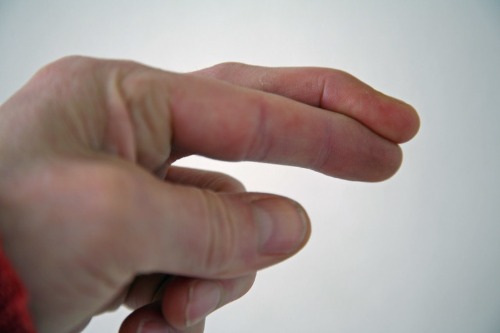
Crossing your fingers began in early Christianity as a literal safety ritual. People would make a cross with their fingers to invoke divine protection when in danger or facing risky situations. This gesture was literally a way to ask for safety from harm, whether on the battlefield, traveling, or during daily hazards. Over time, it transformed into a general symbol of hoping for good luck rather than a direct plea for protection.
The habit stuck because it provided a simple, nonverbal way to seek safety and reassurance. It became a social signal, letting others know you were hoping to avoid misfortune. Children learned it as a playful superstition, disconnected from its life-saving origins. Even today, we cross our fingers when taking chances or waiting for a test result.
7. Stepping on a Crack

Stepping on cracks in pavement or sidewalks was once discouraged to avoid tripping or twisting an ankle. Parents warned children because cracked surfaces often hid hazards like loose stones or uneven slabs. Over time, the “break your mother’s back” rhyme attached a superstition to what was originally a practical warning. Children now recite it playfully, forgetting that the rule was first about safety.
The practice encouraged careful walking in environments full of hidden dangers. By turning it into a rhyme, adults made the safety lesson memorable and fun. Even modern kids who play the game subconsciously practice cautious foot placement. It’s a perfect example of a literal safety habit evolving into a superstition.
8. Not Opening an Umbrella Indoors
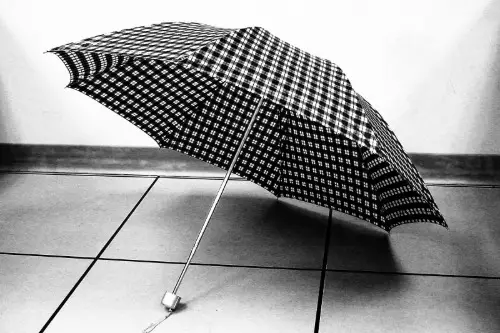
Opening an umbrella indoors began as a real safety precaution. Early umbrellas were heavy, stiff, and often made with metal frames that could injure someone in a confined space. Avoiding indoor opening minimized the risk of poking eyes or knocking objects over. Later, this practical rule became tied to superstition, with the added belief it could bring bad luck.
The superstition persisted because it reinforced cautious behavior around potentially dangerous objects. Even today, people joke about “bad luck” when opening an umbrella inside, but the original concern was very real. It’s one of those rules where the superstition is just a cultural memory of practical wisdom.
9. Avoiding the Number 13

The fear of the number 13, or triskaidekaphobia, has roots in physical and social safety. In early societies, gatherings of 13 people at a table were seen as risky because accidents, arguments, or fatalities often arose during such assemblies. The superstition acted as a precaution, encouraging safer planning for meals, meetings, or construction (hence skipping 13th floors). Today, we treat it as bad luck, forgetting that the original practice aimed to prevent real danger.
This habit stuck because it combined superstition with practical caution. Skipping the 13th floor, seat, or table spot reduced risks in early communal settings. Over time, it became symbolic of misfortune in general. Modern Americans often joke about it but still subtly avoid the number in real estate, flights, or events.
10. Carrying a Horseshoe

Horseshoes were initially carried or hung as a literal protective measure. Iron was believed to repel evil spirits, and horseshoes were often nailed above doorways to prevent fires, structural damage, or pest infestations. This made the horseshoe both a practical safety tool and a talisman against misfortune. Eventually, it became a universal symbol of luck, divorced from the original fire- and pest-prevention purpose.
People continued using horseshoes because they worked in multiple ways. They literally helped protect homes from hazards while psychologically offering comfort. The superstition kept the habit alive even after the practical function was less relevant. Today, a shiny horseshoe above a door mostly signals good fortune, but it started as a real safety precaution.
11. Throwing Coins in a Fountain

Throwing coins in water originally had a safety dimension: people believed water spirits could protect travelers or prevent droughts. The ritual helped communities ensure access to clean water and safe passage, essentially “invoking” protection for daily survival. As society secularized, the practice evolved into a superstition about wishes coming true rather than literal safety. The gesture became more symbolic, but the origin was a practical precaution.
This habit endured because it combined hope, ritual, and safety. Coins acted as a tangible offering to appease forces that controlled essential resources. Even now, tourists toss coins for luck, unaware of the life-preserving origins. It’s a great example of a habit born from a real need and transformed into tradition.
12. Carrying a Lucky Charm
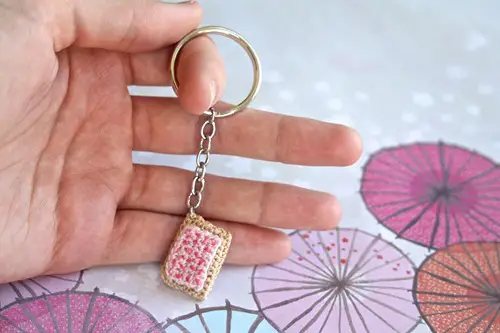
Lucky charms often started as talismans to protect from specific dangers. Soldiers, sailors, and travelers carried small objects to ward off harm, prevent injury, or avoid illness during risky journeys. The objects weren’t just symbolic; they gave people confidence in dangerous situations and reminded them to stay alert. Over time, these charms evolved into general good luck symbols for everyday life, far removed from their original safety purpose.
The use of charms spread because humans naturally seek control over unpredictable hazards. The psychological effect encouraged caution while providing comfort. Today, a tiny charm in a pocket may not save your life, but it carries the cultural memory of survival instincts. It’s the perfect case of a literal safety tool turning into superstition.
This post 12 Everyday American Habits That Started as Safety Rules and Became Superstitions was first published on American Charm.


